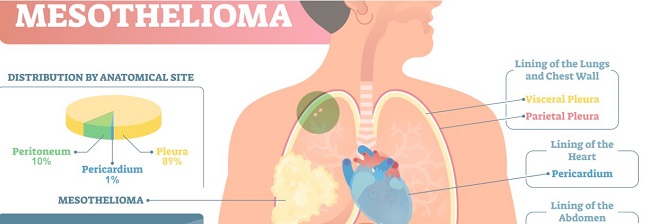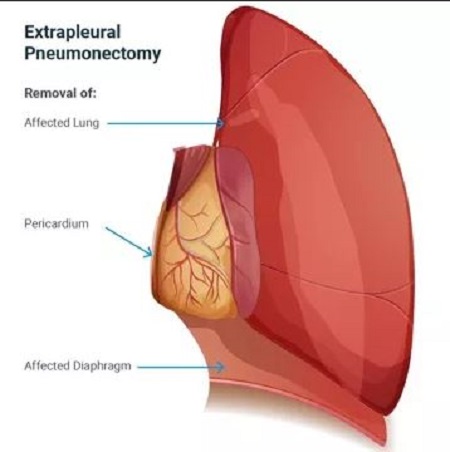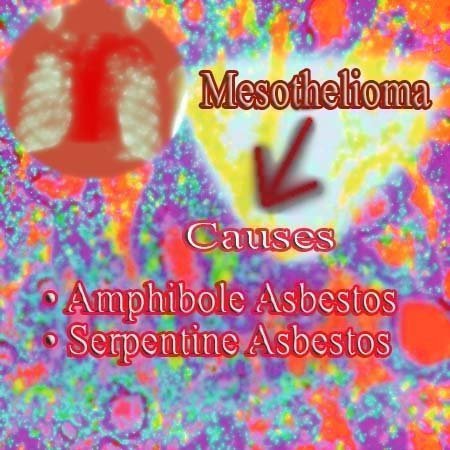Mesothelioma is one of the rarest but deadliest types of cancer, whose cure has not been found still. Although several treatments and therapies are available for the disease, its cure is impossible. It is caused due to the inhaling of asbestos, which later creates a layer around the lungs, heart, abdomen, and chest walls. Mesothelioma also can cause inflammation and genetic damage to the body's cell.
What's Mesothelioma Cancer?
Mesothelioma is a rare type of cancer that occurs in the minute layer of the tissue and covers a large portion of the internal body parts of a human being. The treatments for the deadly form of cancer is available; however, the cures for this disease is impossible.
Generally, Mesothelioma affects the lining of the lungs and chest wall, which is also called 'Pleural Mesothelioma.' Similarly, another known form of Mesothelioma affects the abdomen, heart, and testicles, called Peritoneal, Pericardial, and Testicular Mesothelioma.
Which Asbestos Causes Mesothelioma?
The inhale or contact to 'Asbestos' is the only known reason as the cause of Mesothelioma. 'Asbestos' refers to the six naturally formed fibrous minerals, which are made up of thin and needle-like fibers.
They are thin and delicate; however, they are heat, electricity, and corrosion-proof minerals. And they are used in clothes, plastic, cement, paper, and many other materials to strengthen and fireproof materials.

A form of 'Asbestos' (©: Shutterstock/DailyMail)
Scientifically, the U.S. Environmental Protection Agency states that there are six types of Asbestos known till this date, which comes under the categories:
• Amphibole Asbestos And Serpentine Asbestos
The fibrous minerals like Crocidolite, Amosite, Tremolite, Actinolite, and Anthophyllite fall under Amphibole asbestos, whereas Chrysotile comes under the Serpentine Asbestos category.
The hazardous minerals 'Asbestos' is found especially in the old buildings and constructions, before the 1980s and 1990s. As there were no blockades of using the materials containing asbestos, those infrastructures, including offices, homes, and schools, potentially contain asbestos that can cause 'Mesothelioma.' The asbestos can be highly found in the following sites:
• Insulation
• Drywall products
• Tiles
• Roofing Shingles
People who are in contact with asbestos for a long period throughout their life are considered highly possible patients of this deadly disease. Once they inhale the asbestos, the fibers can remain inside their body for a prolonged time, which can cause the inflammation and also genetic damage of the body's cell. Nevertheless, it is only the cause of rare and aggressive cancer, Mesothelioma.
People associated with the profession of mining and construction are directly affected by the asbestos, whereas their family members become the secondary victims as they are in contact with the asbestos dust of those workers.
It was the 20th century when the researchers found that asbestos causes Mesothelioma. Prior to that, asbestos was linked only to the individual with direct contact with the hazardous minerals.
Effects And Symptoms Of Mesothelioma
The Mesothelioma cancer does not bestow any signs and symptoms until twenty to fifty years of exposure to asbestos when the disease is fully grown.
The deadly form of cancer starts as a small lump on the lining of lungs, abdomen, or heart. However, the symptoms widen as the disease grows up to the fullest.

Effects of Mesothelioma (©: shields.org)
Symptoms/Effects of Mesothelioma include:
• Fever and Night Sweats
• Shortness of Breath
• Respiratory Complications
• Dry Cough
• Pleural effusion
• Fatigue
• Muscle Weakness
Symptoms/Effects of Pleural Mesothelioma include:
• Faint or harsh breathing
• Pleural Effusions
• Blood on Cough
• Malfunctioning of Blood Clotting
• Chest Pains and Body aches
Pleural Mesothelioma affects the lungs and chest walls. Lumps around those body parts appear, spread all around, and affect those organs.
Symptoms/Effects of Peritoneal Mesothelioma include:
• Weight Loss
• Abdominal swelling
• Hernias
• Loss of appetite
• Abdominal Fluid buildup
Peritoneal Mesothelioma affects the abdomen of the human body. As the lumps are seen in the linings of the abdomen, this part is potentially affected to the optimum level.
Symptoms/Effects of Pericardial Mesothelioma include:
• Difficult in breathing
• Chest pains
• Heart murmurs and palpitations
• Fatigue and fever
Pericardial Mesothelioma affects the main part of the body, i.e., heart. The asbestos creates a thin layer of tissue over the heart.
Symptoms/Effects of Testicular Mesothelioma include:
• Hydrocele Swollen testes
• Lump in Scrotum
• Testicular Pain
Testes of the human body are mainly affected by Testicular Mesothelioma.
Know About Stage 4 Mesothelioma
Stage 4 Mesothelioma is the final stage of the deadliest cancer. It is also called the most advanced and difficult stage of Mesothelioma cancer, as no treatments and therapy could be the option for removing the tumors. Some stage 4 patients are even considered weak for surgeries and other therapies.
At stage 4 of this cancer, the tumors have already spread throughout the diaphragm, chest wall, and pericardium. As the Mesothelioma cells have spread all over the internal organs, doctors prefer treatment to improve a patient’s quality of life.
Symptoms/Effects of Stage 4 Mesothelioma include:
• Pain and tightness in the chest
• Abdominal Pain
• Fatigue
• Weight Loss and Anexoria
• Blood on Cough
• Difficulty in Swallowing
• Fluid Buildup in chest and abdomen
• Shortness in breathe
However, stage 4 Mesothelioma does not show the symptoms that indicate a diagnosis of Mesothelioma. This stage of cancer can be diagnosed in hospitals or cancer by oncologists but not general practitioners.
Can Mesothelioma Be Treated?
There are several treatments available for Mesothelioma cancer; however, the cure for the disease is impossible. These treatments include a combination of surgery, chemotherapy, and radiation therapy. Although the ultimate consequence of this deadly disease is death, supportive treatments can help in the improvement of the quality of life of mesothelioma patients.
The American Society of Clinical Oncology has published the treatment guidelines of Mesothelioma in 2018. The doctors use those recommendations as to treatment options. The ASCO recommends the following guidelines for Mesothelioma treatment;
• Surgery
• Chemotherapy
• Radiation
• Multimodal
Besides that, clinical trials also provide several therapies, including immunotherapy, targeted therapy, and photodynamic therapy.
Pleural Mesothelioma Treatments Include The Following Recommendations:
• Surgery
The surgery process removes the tumors from the chest area. The patients, who are diagnosed in the early stage of Mesothelioma is seen living a longer life with improved quality of life.
Generally, two types of surgeries are in action, which is; Extrapleural Pneumonectomy (EPP) and Pleurectomy Decortication (P/D). EPP gets rid of affected lungs and other organs, including diaphragm, heart and chest lining, and lymph nodes.

Extrapleural Pneumonectomy (©: asbestos.com)
However, P/D leaves the lungs and removes cancerous parts of the diaphragm, pleural lining, and the chest wall lining.
• Chemotherapy
In the case that Mesothelioma patients are not eligible for the surgery, doctors recommend chemotherapy as an option to help extend survival rates. As per the Wayne State University study in 2016, a patient undergoing chemotherapy lived three times longer than a normal mesothelioma victim.
Hyperthermic intrathoracic chemotherapy (HITHOC) can be regarded as one of the best therapies for Mesothelioma's patient. This process provides heated chemotherapy drugs throughout the chest cavity.
Know On: Chemotherapy Types And Treatments: Side Effects, Precautions, Success Rate
• Radiation/Radiology
The process of radiation treatment is used to ease pain and discomfort. If radiation is combined with surgery, it can reduce the risk of local recurrence. This process includes two processes; External Beam Radiation Therapy and Brachytherapy.
In External Beam Radiation Therapy, a machine that delivers the X-Rays is used outside the body to kill the cancer cells. Similarly, in Brachytherapy, a radioactive implant is used to kill the deadly cells.
What Are The Treatments For Peritoneal Mesothelioma
This process is used to remove the abdominal lining of Mesothelioma cells. There are two types of procedures of treatment for Peritoneal Mesothelioma— Heated Intraperitoneal Chemotherapy (HIPEC), and Cytoreductive Surgery.
In HIPEC, the doctors provide heated chemotherapy drugs into the abdominal cavity. Similarly, Cytoreductive Surgery gets rid of the growth of Mesothelioma's lining of the abdomen.
What Are The Survival Rates Of Mesothelioma?
Survival rates in Mesothelioma refer to the people with cancer living one and five years after the first diagnosis. This deadly cancer reducts the number of years a patient is expected to live and is directly proportional to his/her life expectancy.
Several factors affect Mesothelioma survival rates that include tumor location, stage of the disease, age at diagnosis, gender, race/ethnicity, and many others.
• Tumor Location
As there are four types of mesothelioma and its affecting parts, it also affects the survival rates as per the location of the tumor. Patients with pleural tumors are likely to live for less than 12 months. Similarly, peritoneal mesothelioma patients survive for a five-year, which is five times more than pleural patients.
However, Pericardial mesothelioma patients live for six weeks to fifteen months.
• Stage Of Disease
The stage of disease at diagnosis indicates the survival period of the mesothelioma patients. Reports suggest that patients who are diagnosed during stage 1 of the disease have the best survival rates.
Likewise, stage 4 is the most dangerous stage of cancer, where the tumors have spread all over the body, making patients weak to go through the surgeries. They also have fewer survival rates.
• Cancer Cell Type
The mesothelioma cell has three categories, Epithelioid, sarcomatoid, and biphasic, which impact the patient's survival rate. Patients with epithelioid cells live for 12 to 24 months from diagnosis.
Similarly, people with sarcomatoid cells makes the survival of six to eight months. Patients having biphasic cells have the average life expectancy around 13 months from diagnosis.
All About Mesothelioma Lawsuits
A patient with Mesothelioma recovers significant money damages in case s/he files a lawsuit. S/he will get considerable money damages from the company that manufactured the asbestos or from an insurance company and asbestos victim trust.
However, the limitations of sue depend from place to place. Patients will get the time of one to five years called state of laws from the diagnosis of Mesothelioma for stepping into a lawsuit. In some states like California, Tennessee, and Louisiana, they will only get one year of the state of laws.
When the victim brings all the reports on medical and working history, his/her lawyer runs a legal session, which finds an identifiable payment source such as an insurance company or trust. However, most of the asbestos cases are settled before becoming a legal issue where both parties agree outside of court to the number of money damages.
While gathering the reports, the law suiter must have the medical records diagnosis of mesothelioma. Also, they should include the manufacturer company that used asbestos in industrial processes like chemical refining or power generation.
Mesothelioma VS Lung Cancer
Both Mesothelioma and Lung cancer are the types of cancer that affect the lungs and chest. Although both deficiencies look alike, they do have some differences. Mesothelioma usually develops the lining of tumors around the lungs, while lung cancer grows itself.
Likewise, Mesothelioma is caused due to inhaling or in contact with asbestos, whereas the factor for causing lung cancer is excessive usage of tobacco products.
Differences Between Mesothelioma And Lung Cancer:
Mesothelioma Cancer |
Lung Cancer |
|
#Mesothelioma cancer is the consequence of inhaling the asbestos, which are fibrous minerals found especially found in the old buildings and mineral ores. |
#Lung Cancer is caused due to over intake of tobacco products, including cigarettes, tobacco, hookah (water pipe), snuff, dip, and snus, snuff as well as exposure to asbestos. |
|
#It creates the lining of mesothelioma tumors and cells around the lungs, testes, heart, abdomen, and chest walls. |
#Lung Cancer is born inside the lungs, and it develops within this organ of a human body. |
|
#This cancer takes 20 to 50 years to develop after initial exposure to asbestos. |
#Lung Cancer can be seen after 10 to 30 years after the first exposure to a carcinogen like asbestos or cigarette smoke. |
Despite that, there are lots of similarities between Mesothelioma cancer and lung cancer. Both the disease can take decades to spread. Also, they have the same kind of diagnostic procedures and treatment techniques.
Moreover, the signs/symptoms and effects of mesothelioma and lung cancer are similar. Both of the diseases include the symptoms of difficulty breathing, fatigue, chest pain, and weight loss.
Books And Guides For Mesothelioma
For the reduction and improvement of one of the incurable diseases, Mesothelioma, several laws and policies have been made. Similarly, media, publications, and mass awareness have played a vital role in this journey.
There are numerous books available regarding Mesothelioma's study. Some of them are Malignant Pleural Mesothelioma, Asbestos and Mesothelioma by Testa and Joseph R.
Similarly, the guides that will provide you the information about Mesothelioma are 100 Questions and Answers About Mesothelioma, What to Eat if You Have Cancer, Surviving Mesothelioma: Making Your Own Miracle, and Lean on Me: Cancer Through a Carer's Eyes.

